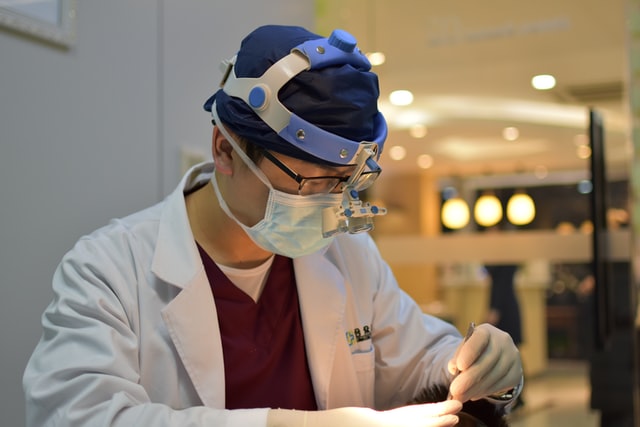
In 2019, our office released an article regarding the findings in the case of Moffet v Dental Corporations Pty Ltd [2019] FCA 344, focussing on the Federal Court’s decision that a dentist, otherwise considered a contractor for employment law purposes, was in fact an employee for superannuation purposes.
This case is important because many allied health clinics and other businesses engage their professionals as independent contractors but may be unaware of their superannuation obligations.
On 16 July 2020, the Full Court provided its determination of the appeal by Dental Corporations Pty Ltd (Dental Corporation) and counter-appeal by Mr Moffet in Dental Corporation Pty Ltd v Moffet [2020] FCAFC 118 (Appeal).
Background Facts
The matter concerned a dentist who sold his practice to Dental Corporation with an agreement that Mr Moffet would continue to provide his services to the business under a ‘Services Agreement’. Some years later Mr Moffet resigned from Dental Corporation and subsequently claimed that he was entitled to accrued annual leave, long service leave and superannuation on the basis that he was an employee of Dental Corporations rather than an independent contractor.
In 2019, the Federal Court rejected Mr Moffet’s claims for annual and long service leave as it was held that Mr Moffet was not an employee of Dental Corporations for employment law purposes, however, concluded that Mr Moffet was an ‘employee’ for the purposes of section 12(3) of the Superannuation Guarantee (Administration) Act 1992 (SGAA).
The matter was appealed.
Contractor/Employment Relationship on Appeal
In the Appeal, the court considered that the following aspects indicated a principal and independent contractor relationship:
- There was no tax withhold by Dental Corporations from fees paid to Mr Moffet;
- The parties agreed there would be no superannuation paid;
- Mr Moffet issued invoices and charged GST to Dental Corporations;
- Mr Moffet promised a minimum cash flow and agreed to allow deductions from his fees for any shortfall to Dental Corporations;
- Mr Moffet was not obligated to work any set times and took holidays at his discretion;
- Mr Moffet determined the fees to be charged to patients; and
- Mr Moffet claimed deductions in his tax returns for expenses incurred in the conduct of the practice.
The court also applied the principle that in determining whether there is an employment relationship, it is necessary to undertake a “multi-factorial assessment” which requires consideration of all relevant indicia. In this regard, the court considered that the trial judge erred in having no consideration for which party owned the goodwill of the practice and, accordingly, elaborated on its application as an aid in analysing whether an employment relationship existed.
The Full Court determined that the dentist was not an employee for ordinary employment law purposes. The decision in this regard should be taken to apply universally to every dentist in a similar arrangement. It was of great importance in this decision that the dentist held himself out as representing himself, notwithstanding that he was practising at the Dental Corporation premises.
Superannuation
Section 12(3) of the SGAA states that:
“If a person works under a contract that is wholly or principally for the labour of the person, the person is an employee of the other party to the contract.”
The court determined that this section is not a reference to employment but rather an “if then” statement intended to expand the definition of ‘employee’ for superannuation purposes. It was also determined that the question of whether the contract is “for the labour of the person” is a question on the purpose of the contract from the perspective of the person obtaining the benefit of the labour.
Upon analysis of the terms of the contract by which Mr Moffet’s services were engaged, it was concluded that the contract was for (for the purposes of section 12(3) of the SGAA) two benefits:
- Mr Moffet’s personal services as a dentist, practice manager, consultant and maintainer of medical records; and
- Mr Moffet’s promise for the practice’s minimum cash flow, backed up by deduction from Mr Moffet’s fees for any shortfall.
It was decided that the two aforementioned benefits were “two sides of the same coin” and should be considered together, where one does not dominate the other. Accordingly, it was held that the contract was in fact “substantially for Mr Moffet’s labour” and therefore fit the required definition under section 12(3) of the SGAA.
Conclusion
It is important for any business that engages a contractor personally (contrasted to engaging a contractor under a company structure) to review the relationship as a whole, taking into consideration the various indicia which may apply. More importantly, and as confirmed in the above case, a business must evaluate further and assess whether there is any superannuation liability despite a principal and contractor relationship. Businesses may be able to mitigate the risk of superannuation liability by implementing the correct structure when engaging independent contractors and accordingly should seek appropriate legal advice on the same.
NB Lawyers – lawyers for employers offer an obligation free consultation to all Employers call +61 (07) 3876 5111.
Written By
Daniel Dash
Senior Associate
NB Lawyers – lawyers for employers
[email protected]
+61 (07) 3876 5111
Lawyer
NB Lawyers – lawyers for employers
Daniel Dash and Zahra Rashedi are part of the commercial law team at NB Lawyers – lawyers for employers working with individuals and business owners on a range of matters including business sales, property disputes, estate disputes, shareholder agreements, intellectual property, litigation and taxation matters.
